Not quite as exciting as the trip to Long Island, making wine is an integral part of our smallholder’s year. Homemade wine is not like its commercial cousin, but is a very palatable alternative, at a very low cost. We make wine out of the many berries we grow, including blackcurrants, mulberries, grapes, crab apples, elderberries and, of course, the abundant wild blackberries. In true smallholder tradition, we will exchange a few bottles with a neighbour in exchange for rhubarb jam.
1st May is traditionally the time to pick the first rhubarb. It is at its sweetest, and the acid content is low. This year, we had a sunny, dry spring, which brought the rhubarb on well. When it was knocked by a couple of days of unexpectedly heavy wind, I harvested the stems. The poisonous leaves went straight on the compost.
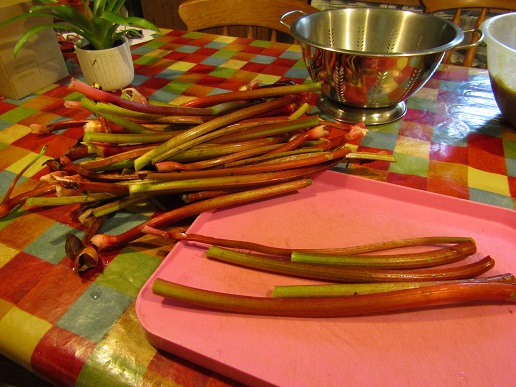
The stems are topped and tailed and cut into chunks. Traditionally, one put dry sugar on the chopped up rhubarb, which drew off the liquid, but I use a juicer these days.

This Greenstar juicer is about twenty years old. Not cheap to buy, it’s proved its worth, and even now one can buy replacement parts. The metal rollers are in the middle section, and the end piece contains a filter. The juice drops out under the rollers, where the measuring jug is presently located. The, pristine white plastic filter end, is the only part we have ever had to buy.

The metal rollers and slow gearing means it will juice just about anything, leaving just the dry husks. We don’t bother with this process for grapes, which have a high volume of water, and take flavour from steeping in the skins after pressing.
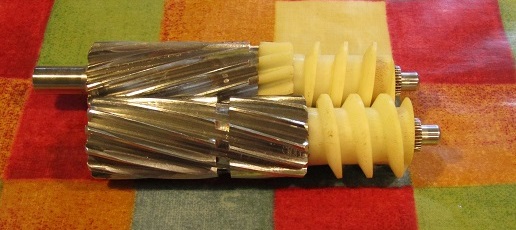
The juice from rhubarb is a subtle rose colour, but ends up with a green scum on top, which looks quite unappetising.
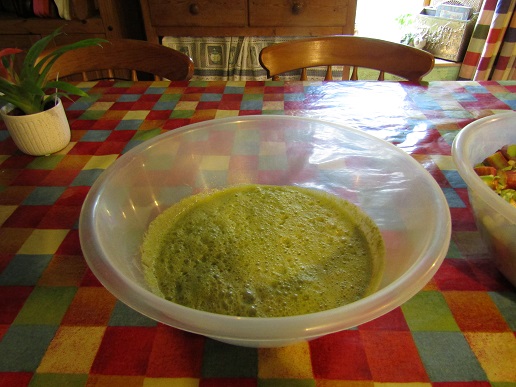
The pigs love the resultant dry husk.
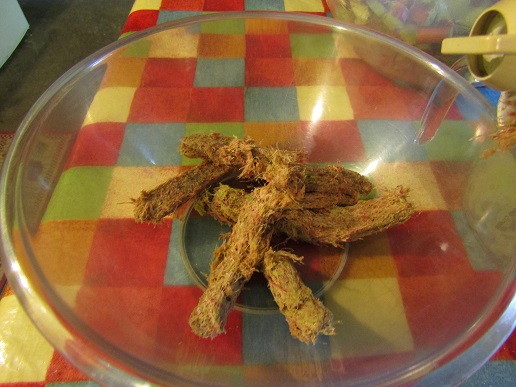
I start the wine off with rhubarb juice, a small percentage of the sugar content, and dried wine yeast.

I leave it for a couple of days to settle out the scum and sediment, then rack it off (siphon) into clean jars, losing the scum and some sediment. The five pints of juice I extracted will end up as five gallons of wine.
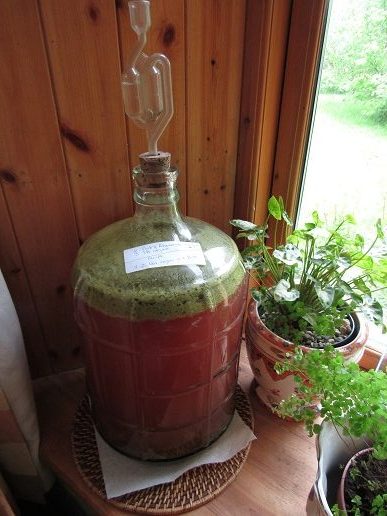
A couple of days later, I split the clean juice between two Carboys, each of which holds around 2.5 gallons, and add the remainder of the sugar, about 2.5 lbs per gallon in total, and top up with water. You can make an alcoholic drink solely with sugar and yeast. The fruit, while providing some of the sugar content, provides all the flavour.
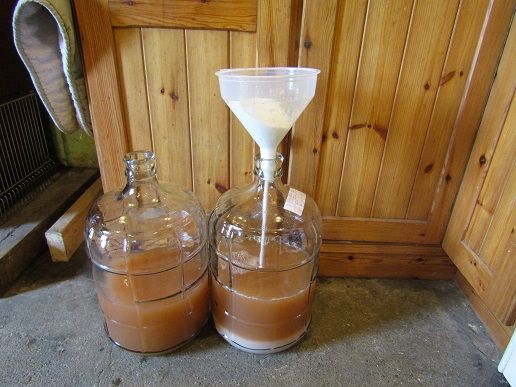
The jars are now fitted with airlocks to allow the gases to escape, and keep any contaminants out while the yeast does its work. I rack the wine off the sediment after the major fermentation, then again before drinking.
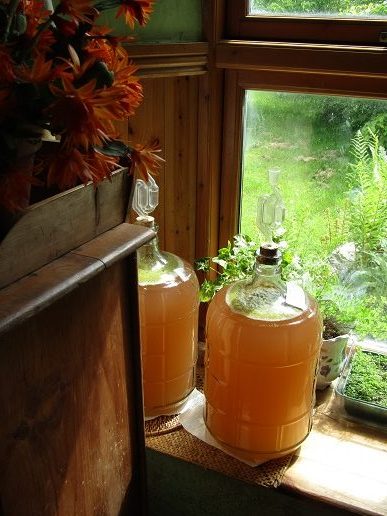
These wines are from last year (apple, white grape and black grape). Check out the clarity and purity of the finished product. We don’t bother to bottle the wines, just pour what we need into a jug for those balmy summer evenings. You can just about see the tiny layer of sediment in the bottom of the grape in the centre of the image.
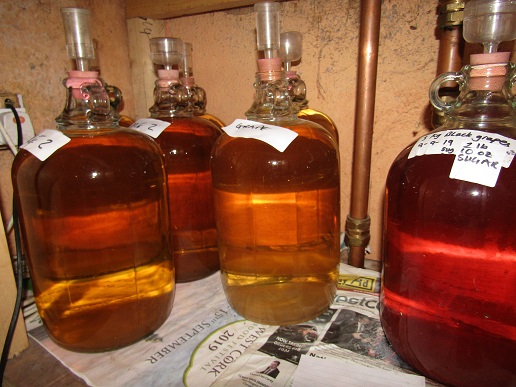
It takes about a year for the rhubarb wine to mature, so we will soon rack off last year’s rhubarb and do a wine-tasting….
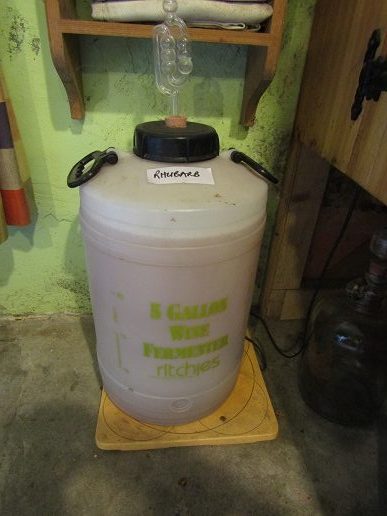
And so farewell, with an idyllic evening view towards the Atlantic from Schull. Long island is just visible on the horizon.
